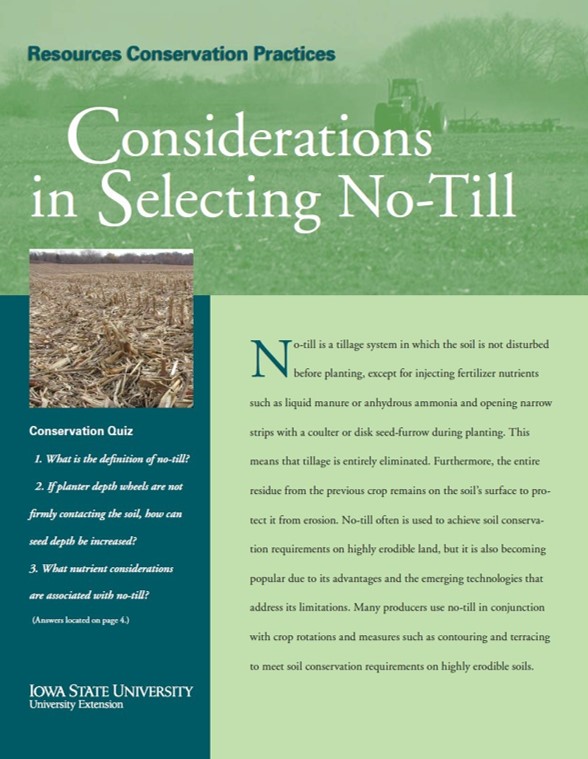Reduced Tillage
Reduced tillage practices that also leave last year’s crop residue on the soil surface have many benefits, including:
- The remaining ground cover prevents soil erosion and protects water quality
- Residue improves soil tilth and adds organic matter to the soil as it decomposes
- Fewer trips and less tillage reduces soil compaction
- Time, energy and labor savings are possible with fewer tillage trips
Farmers are encouraged to discuss their options for various tillage practices with farmer neighbors who are successfully implementing conservation tillage, local Soil & Water Conservation District (SWCD) staff, NRCS, Extension, or Certified Crop Advisers. No one tillage method is appropriate for all fields.
Further Reading:
- For an explanation on the various types of tillage that may benefit your fields, check out this guide from Purdue’s Extension.
- If you are considering no-till, see this excellent brochure from Iowa State:

- Iowa State also put together this guide about transitioning to no-till from other types of tillage.
- Remember, leaving crop residue on the field is not the same as no till.